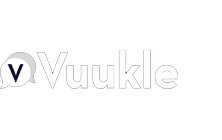Day after day, search after search and page after page–you see ads. Everyone encounters ads, whether you’re a user, a brand, a platform, or a publisher.
What most people don’t know is where those ads come from. Sure, you might have an idea or a good inclination of which brand is being advertised, but once you go beyond that, you don’t know if an ad came through an agency, a direct advertiser campaign, or even somewhere malicious.
Buy-Side Transparency (BST) wants to illuminate this process, so you know who is behind these ads. BST will help you understand who is buying the ad inventory and track the ad all the way back to the original payer–allowing you to follow the transaction from beginning to end.
Three main Buy-Side Transparency initiatives
Confiant has helped promote three IAB Tech Lab initiatives to improve Buy-Side Transparency and help illuminate the entire ad-delivery chain, from the advertiser to the publisher. These initiatives are:
- Buyers.json
- Demand Chain Object (DCO)
- Client-Side Disclosures
Let’s take a look at these three initiatives and what they do.
Buyers.json
Buyers.json maps all buyer IDs and buyer names that a DSP or other platform will publish on their root domain. If you published a buyers.json file, you would be publishing a “map” that lists things like the buyer ID and the buyers name.
Three benefits of the buyers.json include:
- AdOps and compliance teams can pinpoint the source of an attack without needing the support of APIs, specialized tools, or technical staff.
- SSPs can crawl all files and eliminate the manual process of exchanging buyer information with DSPs.
- AdOps and compliance teams can easily identify who’s publishing and who’s buying- as well as the buyer type. Is this someone advertising directly on their behalf to the consumer? Or are they advertising on behalf of someone else’s campaign?
Demand Chain Object (DCO)
Demand Chain Object, or DCO, has been gaining traction in recent months. DCO is an object within OpenRTB composed of a set of nodes where each node represents a specific entity that participates in the purchasing of an impression.
DCO reveals who the buyer is and what other participants are involved in the buying chain. However, unlike buyers.json, with DCO, this is done more privately. Instead of publishing a file with buyer names on the Internet, this would only be available to parties with access to OpenRTB bid response (primarily the SSP and DSP).
Three benefits of Demand Chain Object include:
- DCO allows the DSP to reveal to the SSP who the buyer is, and then that SSP can pass that information to the publisher using something like Prebid.
- No public disclosure; because of this, the DSPs are much more comfortable with it. They're not exposing their client list to competitors.
- DCO provides transparency to every participant in the transaction, which is helpful for everyone downstream.
Client-Side Disclosures
Client-Side Disclosures focus on what can be included in the markup alongside a rendered ad to indicate who bought the ad and help troubleshoot any quality issues.
This is extremely helpful for anyone who doesn’t have access to the bid stream data and therefore isn’t benefiting from the Demand Chain Object.
With Client-Side Disclosures, a string of code appears in the markup when the ad is rendered on the publisher's site–allowing problematic ads to be readily identified by participants who do not have access to bid-stream data.
Some DSPs and SSPs have long provided similar data, but never in a standard format. Providing these Client-Side Disclosures in a simple, human-readable format will standardize the data and encourage everyone in the industry to do the same.
Similar to buyers.json, Client-Side Disclosures allow AdOps and compliance teams to pinpoint the source of an attack without reliance on APIs, specialized tools, or technical staff.
What is Confiant Doing?
Confiant is building support for Demand Chain Object when it's available via Prebid and integrating this information into our Ad Trace reports.
Currently, we identify the DSP, SSP, and creative ID when this information can be inferred. While this is all helpful, we can certainly do better. That's why we are adding a visual representation of what we’re seeing in the DCO file to the report. This means you’ll get a visual representation of:
- The buyer
- The DSP
- The SSP
- The publisher
This visual representation will bring clarity and consistency to our approach.
For example, publishers will easily understand how a creative got to their page, and it will also give them the tools to identify problems and address them with the SSP they’re working with.
Some of the main benefits of this approach are:
- Keeping track of problematic buyer IDs
- Blocking certain buyers
If you continually encounter problems with specific buyers, you can ask the SSP you work with to block that particular buyer. This will eliminate the risk for your users.
Buy-Side Transparency is becoming more and more prevalent in today's ecosystem. This transparency is a must, as it tells you where an ad is coming from, and how it got there. Illuminating this process from start to finish will only increase efficiency and reduce the issues of malvertising and bad ads.
Looking to learn more? Confiant is here to help. Please reach out to us today if you have any questions. Or request a free trial of our platform today.





